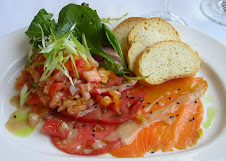
Basil - Bright, pungent flavor. Use in pesto, sauces, salads, meats, fish and soups.
Bay leaves - often used dried for most flavor. Use in sauces, soups or pickling solutions.
Thyme - A minty, tea-like flavor. Used to create bouquet garni with parsley and bay.
Cardamom - Tastes like ginger with a hint of pine. Used highly in curry powder, but also enhances the flavors of squash, pumpkin, potatoes and pastries.
Cayenne - Hot, peppery flavor. Used frequently in Creole, Cajun, Spanish, Mexican, Szechuan, Thai and East Indian recipes.
Cinnamon - Sweet and aromatic. Versatile spice complements a large variety of foods and other spices.
Coriander leaf or seed - Fresh coriander leaves, also known as cilantro, bear a powerful resemblance to Italian flat-leaf parsley, but with a stronger, distinct scent.
Cumin - Powerful peppery flavoring with small citrus overtones. Essential spice in the cuisines of Mexico, India and the Middle East.Dill - Leaves have a soft, sweet taste. Both the leaves and the seeds are used to make flavor food.
Fennel - Mild licorice flavor. Use in soups, salads, fish and vegetable dishes.Ginger - Fragrant, pungent and hot. Can be used fresh, dried or in powder form.
Marjoram - Member of the mint family. Similar to oregano but fewer pungent. Use in salads, fish, meat, vegetable, poultry and egg dishes.
Mint - with more than 25 varieties, flavors range from cool to sweet or somewhat menthol.Nutmeg - Seed of an apricot-like fruit resident to Indonesia, with a cinnamon-like and peppery taste.
Oregano - Also from the mint family, related to marjoram but stronger with an earthy, aromatic flavor.
Parsley — most general types are curly or Italian flat leaf. Mildly fresh aromatic flavor.

































